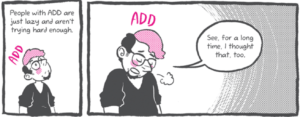I had a conversation the other day with a friend who told me that all she wanted was a small house by the beach, a job she loved, and a sense of peace.
But that sense of peacefulness, despite how ideal it sounds, sometimes feels out of reach for activists.
I, for one, am in a constant state of chaos.
I’m disheartened at the response of sexual assault on campus. I’m angry that people are being murdered and experiencing police violence because of racism, homophobia, and transphobia. I’m frustrated that we live in a system where women are paid less then men (and that Black and Latina women are paid even less than white women), and that there are still arguments about the validity of that statement.
I’m disheartened that I’m a part of all these systems, contributing to them while simultaneously working against them, taking two steps back with every struggled step forward.
And in addition to trying to navigate these social and political injustices, activists are trying to cope with their own everyday struggles that come with being alive.
And those are the days when I don’t think I can sustain the energy and passion that I feel.
I have spent years trying to figure out how to harness my caring in a way that feels inspiring instead of disappointing; yet, with the things that do and don’t flood my newsfeed, it’s hard to imagine that burnout won’t creep up every now and then.
We’ve talked about burnout at Everyday Feminism before – that old feeling of pessimism and physical, emotional, and spiritual exhaustion that comes with advocacy and helping work.
Sometimes what we experience as burnout might just be a bad fit – leading the rallies when you don’t thrive in large groups of people, doing behind-the-scenes work when you actually love being around people, or not being in a space that appreciates your experiences and perspective.
You can distinguish burnout from bad days and bad fits if you find that a) it’s persistent over time, b) you experience it in more than one situation, and/or c) if it’s a change from how you used to feel in similar situations.
We here at Everyday Feminism know the feelings of burnout all too well, so we’ve compiled some tips below for how to move through your burnout and reconnect with yourself:
1. Figure Out What Burnout Feels Like for You
Burnout isn’t something that you either have or you don’t. Rather, think of it like a thermometer.
In order to gauge where you are on this scale, ask yourself some simple reflective questions: What are you feeling? How intense is it? How well are you able to manage those feelings?
There are many feelings associated with the ways in which activists like yourself might experience burnout:
- Anxiety
- Guilt
- Isolation
- Irritability
- Anger
- Sadness
- Pessimism
- Disappointment
- Numbness
- Fatigue/Insomnia
- Lack of motivation
- Physical pain/Sickness
You may feel one, all, or none of these. You may gravitate towards one or two in one time of your life, and experience it differently during other times of your life.
But know that what you’re feeling is normal and that other activists experience similar emotions.
Many times, we can even experience secondary emotions along with our burnout – things like guilt, shame, embarrassment, or frustration. This can come from our own judgments about our feelings and unrealistic expectations from those within our movements.
Try to avoid judging your experiences. Instead, make note of the different ways you are affected by the difficult and valuable work that you’re doing.
Maya Angelou said, “Do the best you can until you know better. Then when you know better, do better.”
A slight twist on this sentiment is, “Do the best you can until you can do more. Then when you can do more, do more.”
We have limited time, energy, and resources. Do what you can with what you have, maintaining the social support, hobbies, and self-care that replenish you and move you forward.
2. Start Building Up Your ‘Coping Bank’
After you identify how you’re experiencing burnout, the next step is to identify how you’re currently managing those feelings. Ask yourself: Are you able to identify behaviors, activities, and ways of coping? And are those still working for you?
It’s never too early or too late to begin adding ideas to your “coping bank.”
A coping bank is your go-to list of activities and behaviors that give you a sense of fulfillment, relief, and replenishment when you’re feeling burnout.
It can be very simple, like a list on your computer or phone, or more creative, like a jar full of ideas that you can literally draw from.
Fill your coping bank with things that you’ve tried and that have worked, and things that you haven’t tried yet that might work. Sometimes we need to switch up our responses, so don’t get discouraged if usually taking a long hike rejuvenates you, and today it doesn’t. Be prepared to experiment and have some fun trying different, new things.
Here are some general start points to start brainstorming coping techniques:
- Join a club or a meet-up in your area (something separate from your activist interests)
- Reconnect with your body
- Learn a new skill
- Attend community events
- Take a hot shower or bath
- Listen to music
- Revisit to your favorite book (or blog, website, article) unrelated to activism
- Re-engage in an old pastime
- Meet up with a friend
The more specific you can get based on your own needs and resources, the better.
For instance, your list might look like this:
- Take a moment to reconnect with your breath.
- Make a cup of tea and sit still until the cup is empty.
- Go for a short walk around the neighborhood.
- Try an arts and crafts exercise like drawing a picture or making someone a card.
- Call someone who you know will affirm, validate, and inspire you.
Sometimes when we’re feeling burned out, it can be difficult to get the motivation to try something. The less guesswork you have to do in the moment, the easier it will be.
3. Find a Community (No Matter How Small) That You Can Confide In
Sharing your experiences demystifies burnout and can provide vital support while you’re moving through it. This can be a group of people or simply a close friend.
It can be easy to isolate ourselves when we feel alone and misunderstood. Building a community is a conscious effort to remind ourselves “I am not alone in this.”
Adrienne Rich said, “The connections between and among women are the most feared, the most problematic, and the most potentially transforming force on the planet.”
This goes for any marginalized group.
When we are given spaces to share our experiences, we can shed light on the ways in which our individual experiences align with others. It’s through these connections that we can better understand these shared experiences, what they mean to us, and where we have power and agency.
Communities, then, can give us a collective voice when our own may be faltering. They can be the extra boost we need to push through or the sensible reminder for self-care and redirection.
Sometimes we’re not in environments where we feel comfortable or safe connecting in our local communities. In that case, finding online communities through blogs, forums, and other websites can help you create the support that might not be readily accessible where you are.
Sometimes our coping bank and support systems aren’t working or aren’t available to us. And in those situations, it might be a good time to reach out for extra support.
Finding a counselor or therapist to help you move through burnout can be a really helpful and sometimes necessary step in helping us reconnect.
4. And, Sometimes, We May Just Need a Break from What We’re Doing
I don’t believe that taking a break needs to be your first line of action, but there are definitely times when we know this just isn’t working for us right now.
And that’s okay.
In those situations, taking time to rediscover or find new passions and interests can be the most difficult and most transforming thing we can do for both ourselves and for our movements.
It can be difficult for activists to admit to themselves and to those around them that they might need a break.
There are stigmas both within and outside activist communities that contribute to the shame and guilt many feel when prioritizing their own mental and physical wellbeing.
Activists often experience burnout because of the demands put forth by their own activist communities – expecting martyrdom and perfectionism.
Additionally, many of relationships, careers, and hobbies are related to our activist work. It can be scary and intimidating to shift away from something that is such a prominent part of someone’s life.
And yet, it’s common for activists throughout their lifespan to shift, grow, and change course.
Many people become activists because they care about certain issues and how they affect people’s lives. By the time we reach the point of needing a break, we may be suffering from compassion fatigue (a temporary decreased capacity for compassion). This can be a confusing, jarring experience for individuals who entered this community because of their caring and concern.
If we are depriving ourselves of our own needs, eventually our time, energy, and caring for others will also deplete.
Sometimes the best way to treat our compassion fatigue is by taking a break.
By internally practicing and building our self-compassion, we can begin to extend that compassion again towards others.
As Audre Lorde said, “Caring for myself is not self-indulgence, it is self-preservation and that is an act of political warfare.”
Admitting that you need a change of pace is an incredibly brave and courageous thing to do.
In addition to potentially being a painful experience, it can also be a really empowering experience. It can ignite a new passion for you, and it can make room for others to carry forward your activist work.
Come back to yourself. Identify what you need. Listen to the feedback that others give you. Talk or learn about activists who might have also experienced burnout. And finally, tap into the parts of yourself that know when something fits and when something doesn’t fit.
***
Maya Angelou also said, “I do not trust people who don’t love themselves and yet tell me, ‘I love you.’ There is an African saying which is: Be careful when a naked person offers you a shirt.”
That is, as we extend help, compassion, and care to others, we should be willing to extend and accept those same things for ourselves.
Self-compassion is definitely less practiced than it is discussed. Yet, we can’t sustain ourselves if we are constantly giving and never replenishing.
For specific ways to build your coping bank, check out these awesome comics:
- 50 Ways to Take a Break by Karen Horneffer-Ginter
- Self-Care Things by Sad Teen Queer
- A Brief Guide to Self-Care by E.J. Landsman
- Self-Care Tips by Virginia Paine and More Self-Care Tips by Virginia Paine
To read more Everyday Feminism articles about self-care, check out these links:
- Burnout Prevention and Intervention
- Top 3 Signs You May Need a Break from the Feminist Blogosphere
- Self-Care 101: What It Is and How to Start
- 5 Ways to Take Care of Yourself Today
- Self-Care for Type A Productivity Monsters Like Myself
Share on Facebook and Twitter how you experience burnout and how you cope!
[do_widget id=”text-101″]
Aliya Khan is a Contributing Writer for Everyday Feminism and identifies as a feminist, activist, and life-long learner. She provided crisis support to survivors of abuse at the Women’s Center and Shelter of Greater Pittsburgh and is currently living, studying, and writing in the pacific northwest.
Search our 3000+ articles!
Read our articles about:
Our online racial justice training
Used by hundreds of universities, non-profits, and businesses.
Click to learn more





















